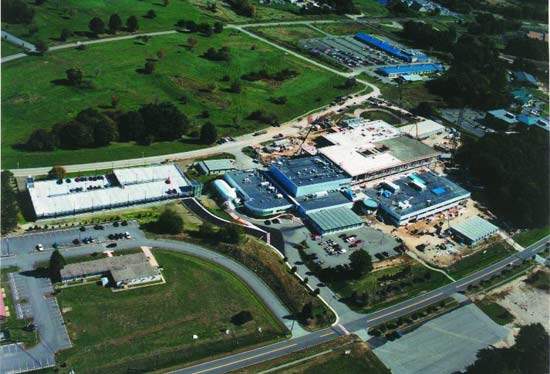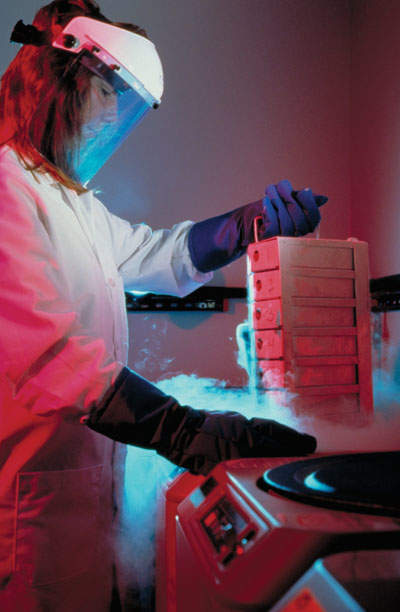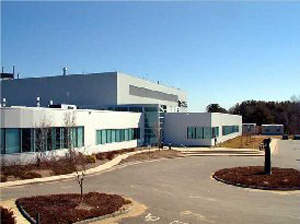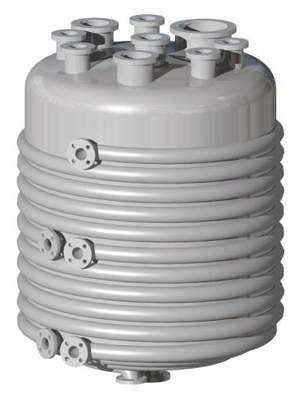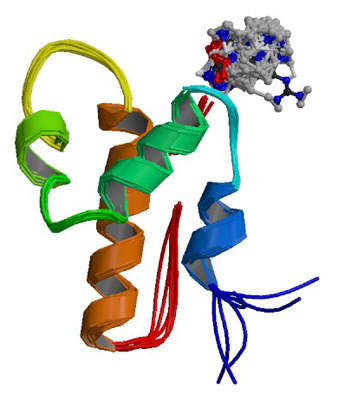Lonza Biologics completed the large-scale expansion of their facility in Portsmouth, New Hampshire, Pease International Tradeport, US in 2004. The project started in 2000 with the aim of expanding the production capacity of the New Hampshire plant by the installation of three 20,000l stirred tank batch bioreactors and supporting infrastructure such as purification facilities, warehousing and QC laboratories. Upon completion of the original 20,000l design, a fourth reactor train was constructed and commissioned. The first GMP runs were started in mid-2006.
The investment for the expansion was estimated at some SFr330m ($207m). The workforce at the New Hampshire site is currently around 600.
The New Hampshire site has undergone many expansions since it was first opened in 1999. One of the first expansion projects was completed and opened in early April 2003. This was a two-storey office complex, including a laboratory and office support utilities.
Lonza Biologics plant expansion contractors and subcontractors
The ‘Lonza Large-Scale Build-Out’, an expansion of some 26,000m² (280,000ft²) floor space was managed by Parsons. The company was responsible for the management of engineering, procurement and construction in the overall project. The Lonza-Parsons project team started to work on the plant design late in 2000 with the design finalised in 2001.
Subcontractors working for Parsons included Phoenix Imperative, Grudeau, Appledore Engineering and Gilbane Construction. With the design finalised for a modular facility fully compliant with FDA cGMP requirements, construction of the main concrete superstructure started in 2002.
PRISM engineering project management software
At the time of the ‘Large-Scale Build-Out’, Parsons and Lonza decided to use project administration and contract control software designed specifically for the engineering and construction industries as the platform for project communications. The PRISM and Livelink document management software was implemented in an attempt to save time on plan approval and decisions making as all design documents were fully electronic until construction began when paper plans were produced.
Stirred tank batch bioreactors
The heart of the expansion, the four 20,000l stirred tank batch bioreactors, were designed and constructed by Kinetics Modular Systems (KMS).
The automation and control systems in the plant were designed and installed by Emerson Process Management at a cost of $7m. Emerson also provided digital automation systems, instrumentation, valves and engineering services.
Emerson had 18 engineers working onsite alongside Lonza personnel. The programming work for the control systems was undertaken at Emerson’s St Louis headquarters with some of the work being subcontracted to PROCONEX of Philadelphia, and New England Controls of Mansfield, Massachusetts.
Modular biologics plant
Lonza favoured a modular design for the new expansion. A senior project engineer at Lonza, Steve Gravallese, and John Machulski, the project director, both explained the reasons for this decision at a 2003 meeting of the Boston chapter of the ‘International Society of Pharmaceutical Engineers’. The modular approach reduces costs since off-site construction of a large plant can be carried out concurrently with other processes.
Some validation and most commissioning and testing can be carried out before the final installation with the end user. The modular approach does require designs to be finalised very early on and any problems to be flagged before proceeding. There is a size limitation imposed on the plant design because of the need to transport the equipment from the place of manufacture to the facility. Lonza adopted this approach to save time in this expansion project.
Biologics manufacturing plant facilities
The facilities at the new manufacturing plant then included some 80,000l of additional bioreactor capacity, which more than quadrupled the existing plant’s manufacturing capability. The production target was to run up to 80 batches per year at full production. The facility was designed primarily for the production of therapeutic proteins produced from mammalian cell cultures using deep tank batch fermentation systems.
The primary recovery train has ultra high speed centrifugal separation to remove the bulk of the cellular material followed by depth filtration and 0.22µm filtration. In addition there are four column stages with accompanying concentration and diafiltration.
The train also includes one intermediate viral filtration stage before the final product is submitted for quality assurance/quality control. The plant has been designed with built-in flexibility capabilities to accommodate several processes.
The plant has extensive new cold room and clean room facilities along with the warehousing capacity necessary to store the manufactured products. The expansion of the production area was completed by August 2003 and began operations following validation by March 2004. The bioreactor production volume after the second expansion was 93,000l This included two 1,500l perfusion systems, two 5,000l airlift systems and four 20,000l stirred tanks.
In mid-2008, the capacity of the site was further expanded to 98,000l with the addition of a third 5,000l airlift reactor.
Further biologics plant expansion in 2006-2007
In August 2006, the $300m (€220m) plan was revived. The company built a three-storey, 330,000ft² expansion at the original 17.7-acre site. The shell was constructed in order to facilitate Lonza’s further expansion programmes. The availability of the shell will reduce up to 18 months from the schedule in case of an expansion in future.
The site currently has a 353,000ft² foot plant and a four-storey parking garage. There is a new access road connecting to Goose Bay Drive. The expansion also included a new ‘mid-scale’ plant with an additional six 5,000l bioreactors with airlift technology and high-titre purification capabilities that were commissioned in mid-2008. The facility has been designed for new, high-concentration production processes.

